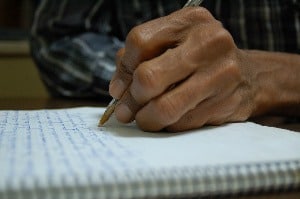Translation is a necessary task in order to communicate ideas across various language barriers. However, what you might not consider before getting professional translation services, is how your own writing can affect the end result of the translation. There are 10 essential tips to keep in mind when writing for translation…
Inter-Ethnic Communication

Naturally, these types of non-linguistic communication styles are very limited. Therefore, there is still a need to rely on a professional translator if you yourself don’t posses the ability to translate. One of the ways you can assure that nothing gets lost in translation, especially with potentially complex or technical texts, is by ensuring that your writing for translation is done according to best practices. If you are not the author of the original document (or translation source text), you may still have to check that it is written well.
The Importance of the Original Text When Writing for Translation

Let’s take a source document written in English as an example. Assume that the writer is a native English speaker who must prepare a document that will be translated into multiple languages, such as Spanish, Russian, Mandarin Chinese and Hindi. So how does one go about “internationalizing” the text? One main consideration is whether the original text can be read clearly and effortlessly. Take the below example, which contains a multitude of English grammar mistakes.
Original text: “Little Alice, after noticing unusual Rabbit, runs after it and in the heat of her chase falls into a deep hole.”
Corrected text: “After noticing an unusual Rabbit, little Alice, runs after it and falls into a deep hole in the heat of her chase.”
Although the original text’s meaning can be derived by an English speaker, translators often have to do their job as faithfully to the source text as possible. This means that if attention is not paid to wording or grammar when first writing for translation, your poorly worded English text may come out just as poor, or even completely unclear, in the translation.
Another area to watch out for are words or phrases with duplicate meanings. Although something may make perfect sense to the reader in English, once translated into another language there might exist more than one possible meaning where only one of them is correct. In order to avoid a poor, or time consuming translation process, writers of text who know ahead of time it will be translated, should keep 10 main things in mind.
10 Essential Tips to Ensure Accuracy When Writing for Translation

1. Be concise: Be as brief as possible without omitting the essential details.
2. Use clear language: Simple language is the best, even if you are describing something that is very sophisticated.
3. Avoid double meanings: Avoid using phrases or wordings that have more than one possible meaning.
4. Use well established terminology: Translators use Translation Memory databases in order to keep with the standardized equivalents. Using established terms consistently further ensures a correct translation.
5. Avoid colloquialisms: Use expressions that can be understood by everyone. Of course, ultimately it is the job of the translator to find the closest language equivalent.
6. Avoid narrow columns: Keep in mind language differences may create formatting difficulties, particularly in the case of different written scripts.
7. Allow room to expand: The amount of space required is entirely dependent on the language. For example a Russian translation is significantly longer than its English equivalent.
8. Use correct abbreviations: Units of measure, titles, and names must be correctly abbreviated. Be aware that in some languages, such as Mandarin Chinese, abbreviations are not common.
9. Use one idea per sentence: Sentences which represent a number of ideas can often be misinterpreted even when they are not translated. Keep in mind this only complicates translation and increases potential for misunderstandings.
10. Be specific: Use specific language in order to ensure that the translated version will be accurate. When the source is vague there is more chance for a translation error.
About Language Connections:
Language Connections is one of the top language service companies in the US. Over the last 30 years, we’ve focused on providing the best business translation services, interpreting services, as well as interpreter training and customized language training programs. In addition to top-tier corporate language training, we offer certified corporate interpreters and professional business translation services in 200+ languages. Our network includes linguists with backgrounds in all major industries. They’re ready to meet your needs, whether they’re for technical translation services, legal translation, government translation services, international development translation services, education translation services, life sciences translation, or something else. Reach out to us today for a free quote on our cost-efficient and timely translation services, interpreters, or other linguistic services.
Language Connections Inc.
2001 Beacon Street, Suite 105,
Boston, MA 02135
Phone: +1-617-731-3510
Email: service@languageconnections.com


